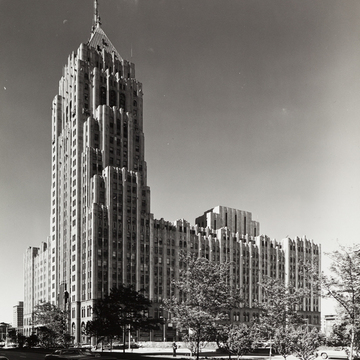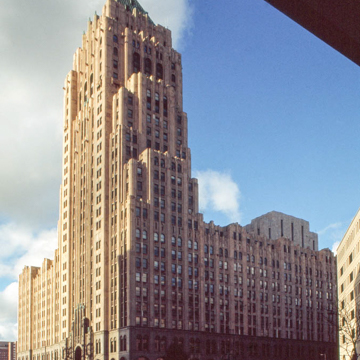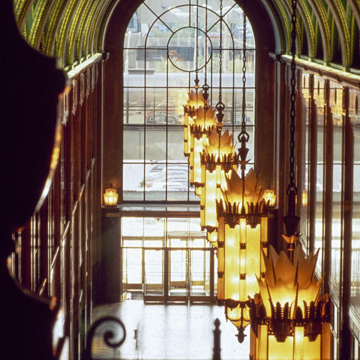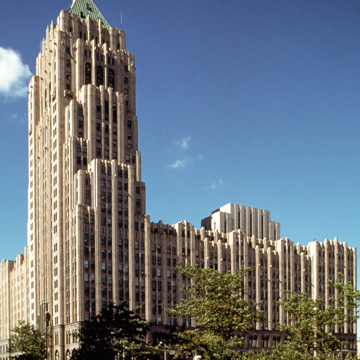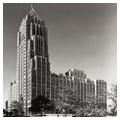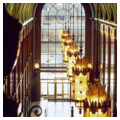Meant to be a city within a city, the massive, soaring Fisher Building with its vertical emphasis throughout is a structure where one can park, conduct one's business, bank, shop, dine, and be entertained without having to leave the building. It is Kahn's most important nonindustrial building from the 1920s. The seven Fisher brothers—Fred, Alfred, Lawrence, Charles, William, Howard, and Edward—ostensibly built the building as a home for Fisher and Company, which had pioneered in making the closed automobile body. In reality they may have intended it as a monument to themselves. The Fisher brothers chose the best materials, the best location, and the best architect, who, in turn, engaged the most talented sculptors, modelers, decorators, and craftsmen as collaborators.
The Fisher Building is a twenty-eight-story tower with two eleven-story wings spanning to the north along 2nd Avenue, and to the west along Grand Boulevard. The exterior bears a striking resemblance to Eliel Saarinen's Chicago Tribune Tower design of 1922. Kahn begins with an arcaded basement unit similar to the one he used in the earlier General Motors Building ( WN76). Above that, however, the vertical piers rise unbroken to a tapered top, reflecting in dramatic terms the change in attitude toward high-rise design that was signalled by Saarinen's Tribune Tower. The lower three floors of the Fisher Building are of Minnesota granite, while the upper floors are of Maryland marble. A sloped roof originally covered with gold-leafed tile, but now with green tile, tops the building. Inside, the forty-four-foot-high, barrel-vaulted arcade is ornamented with paintings, marble, mosaic, and bronze. Blues, peacock-greens, gold, and deep orange predominate in the decorative artwork of the arcade. On the rotunda near the main entrance there is a circular design of cherubs and eagles, and elsewhere in the arcade are symbolic muses and nude figures, flora and fauna, folk art motifs, and eagles. Much decoration is the work of Geza Maroti of Budapest, a proponent of the European Arts and Crafts movement. The Fisher Theater, originally designed as a movie palace by A. S. Graven and A. G. Mayger in a Central American motif, was renovated in 1961. Of three towers intended for the site, only this one was built. In 1929, the Fisher Building won the Silver Medal Award of the Architectural League of New York as the most beautiful commercial building erected that year. In 1989 it was designated a National Historic Landmark.


